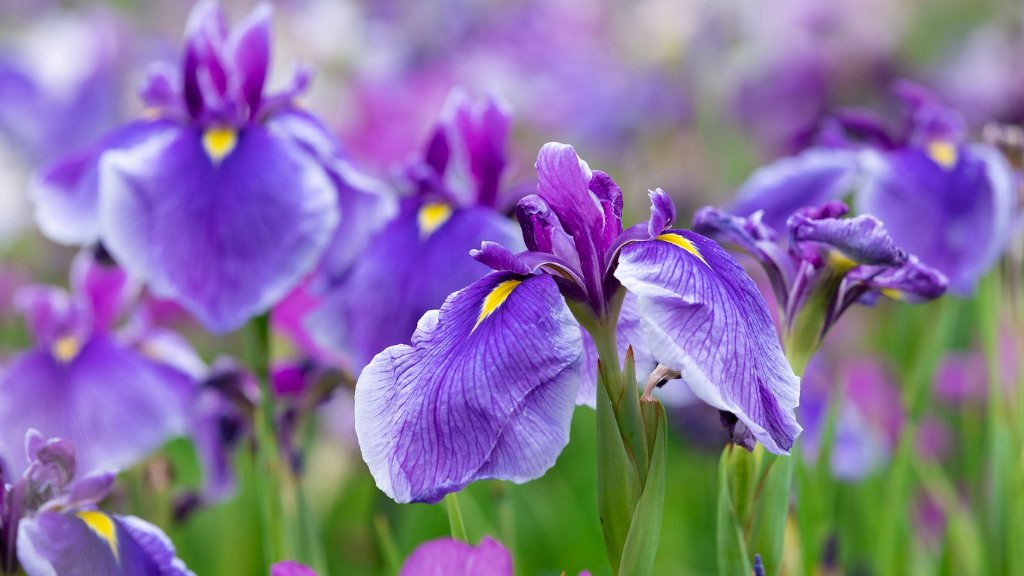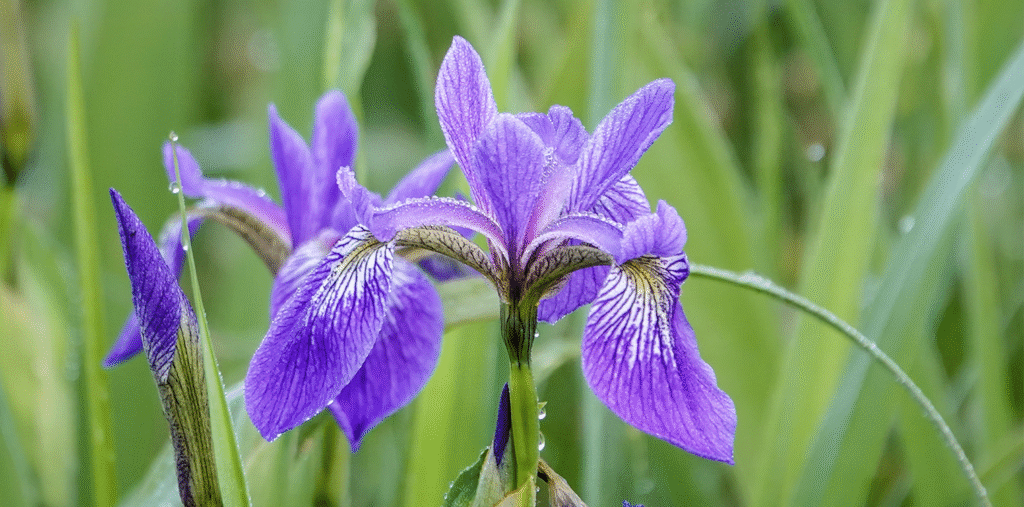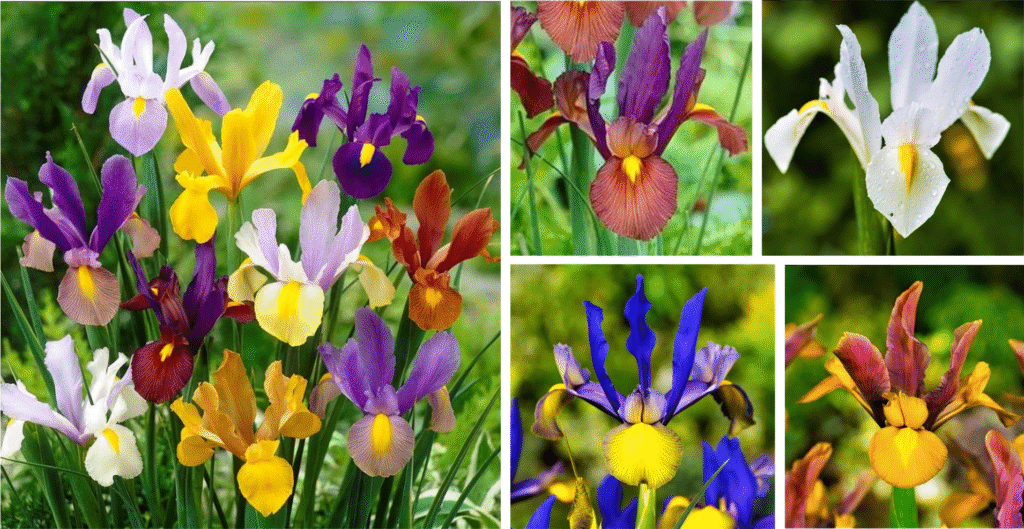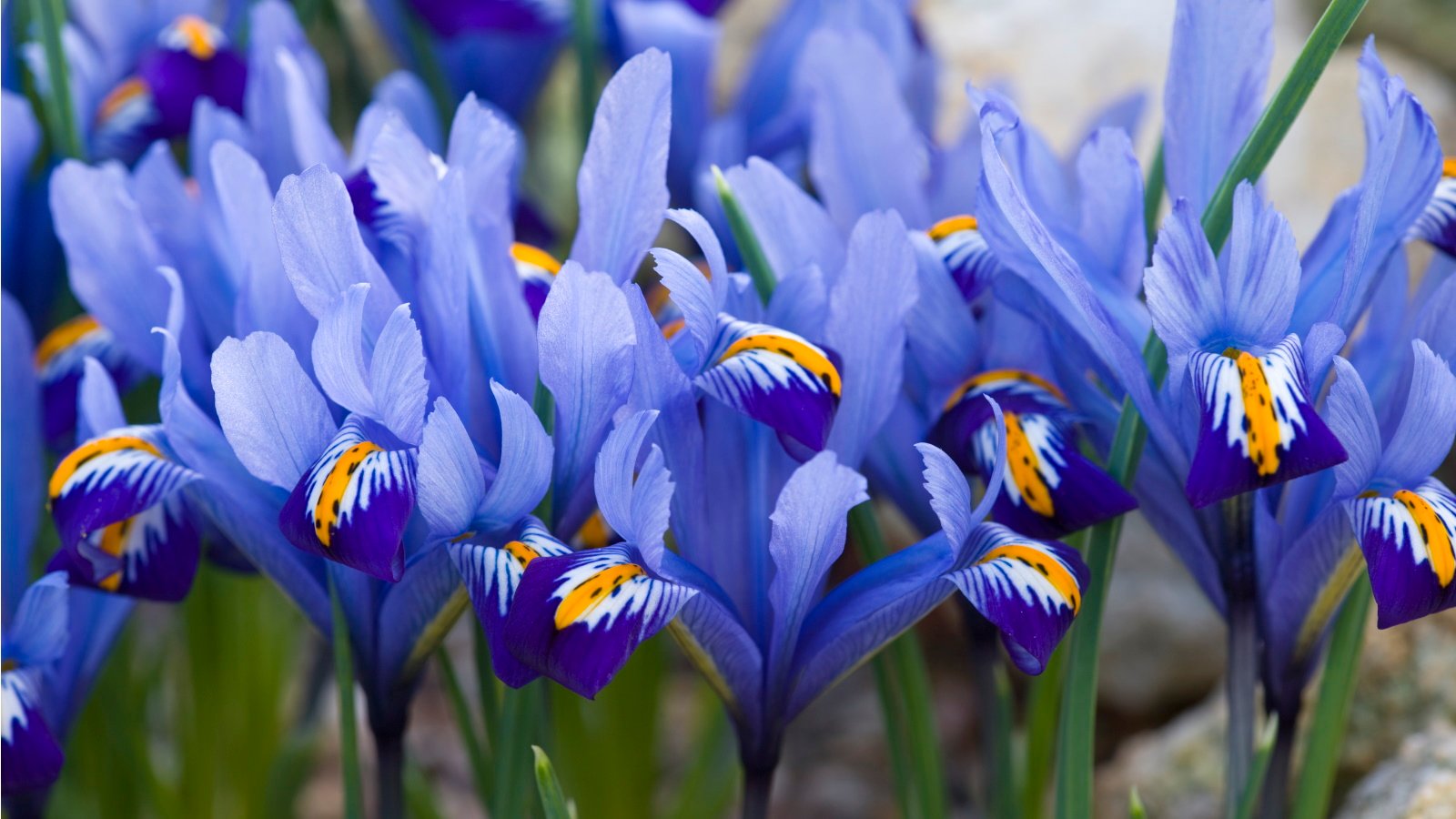The iris flower—scientifically known as the genus Iris—comprises around 300 species of some of the world’s most captivating and colorful flowering plants. Renowned for its striking beauty and deep symbolic meanings, the iris iris flower has played a notable role in art, culture, and gardening for centuries. Whether you’re drawn to the purple iris flower, the regal blue flower iris, or the rare black iris flower, this guide explores everything you need to know, from history to plant care.

Iris Flower Meaning and Symbolism
The iris flower meaning is rich and multifaceted. In Greek mythology, Iris was the goddess of the rainbow, acting as a messenger between gods and humans. The flower symbolizes faith, hope, wisdom, and courage, often associated with messages and transitions. The iris flower symbolism also ties into royalty and power, most famously as the fleur-de-lis emblem of French royalty.
In modern floral arrangements, the iris often represents admiration and compliments, making it a thoughtful gift for both romantic and platonic occasions.
Related Article 20 Green and White Garden Ideas for Serene Spaces
Physical Characteristics of Iris Flowers
Irises can be either bulbous or rhizomatous, with thick creeping underground stems. Rhizomatous irises have horizontal, sturdy stems that often grow partially exposed above the soil. These varieties are commonly found in North Temperate Zones. In contrast, bulbous irises like those native to southwestern Europe have short conical stems and seamless leaf bases that make up most of the bulb. These plants can reproduce through bulblets, offering a natural way to propagate the iris.
Related Article 25+ Creative Garden Art Ideas to Transform Your Outdoor Oasis
Popular Iris Flower Colors
Iris flower colors span nearly every hue of the rainbow. From the classic blue iris flower and white iris flower to vibrant hybrids that combine yellow, violet, and even near-black tones, the iris is a playground for color enthusiasts.
- Purple bearded iris flower: A favorite among gardeners, known for its dramatic ruffled petals and “beard.”
- Black iris flower: Rare and mysterious, symbolizing elegance and power.
- Blue flower iris: Cool-toned and calming, often linked to serenity and trust.

Bearded Iris Flower: Garden Favorite
The bearded iris flower is perhaps the most beloved variety among gardeners. These German irises are hybrids of I. pallida, I. variegata, and I. germanica, featuring tall stems, sword-like foliage, and lavish blooms. Many are fragrant and come in combinations of purple, blue, yellow, and white, often with a distinct fuzzy “beard” on the lower petals.
Also Read
In the 1900s, the introduction of I. mesopotamica led to the creation of even taller and more robust hybrids. These new strains continue to be a highlight in flower shows and gardens worldwide.

Beardless Iris Varieties
Not all irises have beards. The Japanese iris flower (I. ensata), known for its elegant, water-loving nature, is a staple in traditional Japanese gardens and paintings. Its large, almost flat blooms surround delicate, drooping falls.

Other beardless types include:
- Siberian iris flower (I. sibirica): Slender stalks with blue or white blooms.
- Spuria iris: Shorter, sturdy, and ideal for dry gardens.
- Yellow flag iris (I. pseudacorus): Thrives in wetlands and known for its bright yellow petals.
- Blue flag iris (I. versicolor): Native to North American marshes and meadows.
Bulbous Iris Varieties
Among bulbous irises, the Spanish iris (I. xiphium) and the English iris (I. xiphioides) are especially notable. These originate from the mountains of Spain and feature narrow, linear foliage with vibrant blue or violet flowers. The Dutch iris, a sturdy hybrid developed in the Netherlands, blooms earlier and is a popular choice for springtime floral arrangements.

Iris Flower Definition and Botanical Importance
The iris flower definition goes beyond its beauty—it’s a key player in the floral industry. Not only is it prized for garden displays and cut-flower arrangements, but it’s also the source of orrisroot, an ingredient used in luxury perfumes, especially in producing “essence of violet.”
The iris flower wuthering waves reference, increasingly seen in online searches, likely ties to poetic or artistic themes, where irises represent undying love, melancholy, or the beauty of nature in literature or gaming culture.
Iris Flower Plant Care Tips
Caring for your iris flower plant involves knowing its type:
- Bearded iris: Requires full sun and well-drained soil. Divide rhizomes every 2–3 years for best bloom production.
- Japanese and Siberian iris: Prefer moist, slightly acidic soil and partial sun.
- Bulbous iris: Plant in fall in sandy, well-draining soil; ideal for rock gardens or containers.
- Ensure that rhizomes or bulbs are not buried too deep to avoid rot, and trim leaves after blooming to encourage healthy regrowth.
How to Grow Irises in Your Garden: 7 Iris Care Tips
Final Thoughts
From the delicate white iris flower to the striking purple bearded iris flower, this timeless bloom offers variety, symbolism, and aesthetic appeal. Whether you’re intrigued by the historical significance, the iris flower colors, or its horticultural richness, the iris flower remains a botanical treasure. With its ability to thrive across climates and its profound cultural meaning, the iris is more than just a pretty bloom—it’s a story unfolding in petals.
